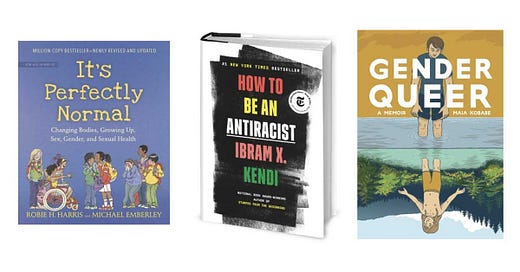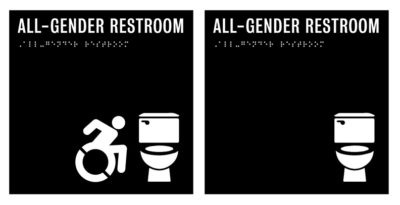Third grade was tough. I was smaller than all the other farm-raised kids at school, and we had just moved (again) from where I started elementary school to a new community, a new place where I had no friends and no history. It didn’t go well. Newness and smallness were problems, but the bigger one was getting glasses that year. It set me apart from all the other kids.
Pause for a beat, and think back to 1987 (if you remember it). Whitney Houston wanted to dance with somebody. U2 still hadn’t found what they were looking for. Dirty Dancing was having the time of its life, and the rest of us were walking like Egyptians. The Princess Bride was still a relative flop at the box office because of hits like Lethal Weapon, Platoon, and Fatal Attraction. 1987 was – by all accounts – incredibly cool.
Unless you wore glasses in the third grade.
Unlike the rest of this post, I’m going to zoom in. It’s important for you to look very, very closely at the tiniest detail, the small foil image at the hinge on either side of that pair of glasses that was my very first. If you squint you can see the picture of a tiny Smurf.1
Oddly, Smurfs were popular enough with elementary school kids in general that I didn’t get beaten up for that feature of my new glasses. No, the physical torture from my classmates was because I already didn’t fit in, and this was one more justification for violence.
But for me, the kid wearing them, glasses helped me see the world without having to lean in close to every detail. And that’s my theme.
I’m grown now (maybe a little more than I should be in some ways, less in others). I still wear glasses. And now I have a job that is challenging to describe, but can be summed up by saying…
I help others craft better questions so that their answers are more meaningful.2
How does this work? Typically, you start with a question, and then I ask you a different question that nudges you back a little bit, a slight step to help you see the bigger picture. Are you asking the right question? Is it even relevant? And if you get an answer to it, what does that tell you? Is it useful? Can you turn it into an action item? Will it help anyone?
Let’s give it a whirl.
Bathrooms.
Bathrooms stress me out. All those decisions, all of the potential repercussions of a choice, watchdog politics in the news, angry folks, and my bladder (who got a little beaten up after having two kids as roommates a few years back). I’ve posted about this before; bathrooms are an incredible source of anxiety for trans folks. And for those of us who identify in a nonbinary way, the act of deciding at all can be stress-inducing. I have often stopped and stared at the two available doors with complete uncertainty. It feels like I’m making a declaration about myself that isn’t supported by evidence. It is never that resolved internally.
Which restroom should I choose?3
Here is where we should stop, take a step back, widen the lens, and ask a better question.
Why should anyone have to choose?
“Hey Papi?” my youngest asked me not long ago. “How come there’s no boy’s or girl’s bathroom in our house?”
“Oh, that’s easy,” I explained. “I’m not giving your Mom her own bathroom, and I’m not sharing with you and your brother. You get toothpaste all over the sink. It’s disgusting.”
“So why is there a boy’s and girl’s bathroom at school?”
Why indeed.
Restrooms need a toilet with privacy around the stall. It doesn’t matter who you are, if it’s good enough for your master bathroom at home, it’s good enough at Ikea. And every restroom needs a sink with soap and a way to dry your hands. That’s it. And look how much time, energy, and capital we have spent trying to solve a problem my 7-year-old understands.

Identification.
A year ago I went to the DOL to get a new license. I changed the gender marker to an X, which is an option where I live. It’s new, and more people are asking for it in other places. US passports have the option to self-select an X gender marker. Social Security will be next (and imagine all the forms that will require updating!). As someone who works with data systems, I can only cringe at the level of work required to add another field to so many forms, to so many datasets. Sure, it’s just one more column, one more attribute. And it isn’t really that hard to offer it.4
But is there a better question to ask here? One like…
Why do we need this information on our identification in the first place?
I can hear the rebuttal already. We use this to help identify someone physically if they committed a crime or are lost or abducted. But… Do we? Should we? Is that really the best way? Or are we just asking this question (M or F or X) because it has always been asked, and we simply don’t know a better way?
And if you saw someone running down a crowded street and had to describe them later, would you even get it right?
More importantly, are we creating harm by asking for gender on identifying documents?
Yes. We are.
If we go back 45 years, to a late blizzard that raged into the end of March, to a pair of expectant parents who’s second kid was several days late emerging, to that moment when their tiny baby was declared to be something based off of what the delivery doctor observed, yes, harm was created. And even though the number of trans, nonbinary, and intersex people compared to the overall population is a small quantity, each and every one of those people is important. If it happened to you or to your child or to someone you loved, you would see that harm for what it is.
I am so grateful for the third option on some forms of identification. We need it desperately. But there is a bigger problem we are not addressing that will forever chase us to update more forms, to offer more options, to amend and retract and apologize, all because we are not asking the right question.
Book bans.
I grew up reading To Kill a Mockingbird and The Catcher in the Rye when I was in middle school. We read Toni Morrison’s The Bluest Eye in late high school, and I remember thinking at the time that it was very mature material for me or for any kid my age, and I know that I struggled with it. We didn’t have access to many of the newer books that are causing a ruckus in public schools around the United States right now, but the concept of “appropriateness” was certainly relevant back then. That’s always been an important thing to argue about when it comes to kids and books, kids and film, kids and politics.
And Tango Makes Three (a child’s book about two male penguins who raise a baby penguin chick together) is one of the most contentious children’s books on the minds of Americans right now.
So let’s just back up together.
This is a book about penguins. When did we start to take things so seriously that we need to ban books about penguins? While I have heard arguments from some sides of this debate that books like this give children “ideas about queer themes,” hasn’t anyone asked in return, “If you’re so worried about penguins teaching your kids to be gay, how is it that all the other cishet-normative materials out there haven’t taught the queer people to be straight?”
What are books supposed to teach us?
It can be scary or unsettling to learn new things. Science has done that over and over throughout human history. Galileo, as a matter of fact, was placed under house arrest until the end of his life for writing a book about how the Earth revolves around the sun (gosh, now that’s a book to ban)! Books can shake things up. They can introduce us to new ways of seeing the world around us. They can teach us new ideas, new approaches. In fact, we use books to do this all the time. That’s the point. Books show us something new, something we don’t know, something that challenges our worldview. And they should continue doing that.
I wish more people would care about data analytics. The question you ask is so, so important in order to get to an answer that’s meaningful and valid. Take a step back, examine a fuller view of the circumstances and environment in which the question came up, and ask yourself if the question even makes sense.
Your trans friend,
Robin
I will admit that there could be some controversy here. Which Smurf was it? I insisted that it was Hefty Smurf, the one who was obsessed with lifting weights and being strong. How very telling of my future self-image! In all honesty, it was probably a generic Smurf, but please don’t ruin the tiny ego of 9-year-old me.
Yeah sure, some people call this “data analytics.”
There are a lot of funny restroom signs out there. Some feature unicorns and merpersons, some have sasquatch and aliens. While I do appreciate a good joke, and I’m more than happy to laugh, I also want to acknowledge that signs like those can be taken as mocking and cruel by those of us who don’t identify with a binary male or female gender. Bathroom signs that simply state what you will find inside are considerably more helpful to those who need that information.
https://thehill.com/changing-america/respect/diversity-inclusion/3507206-here-are-the-states-where-you-can-and-cannot-change-your-gender-designation-on-official-documents/








I have yet to figure out this book banning nonsense. That is usually reserved for dictatorships. As for the uproar over drag queen story hour, I fail to see how this can possibly harm children. They are probably focused on the story that the lady is reading to them. You do have my sympathy on the rest room issue though.